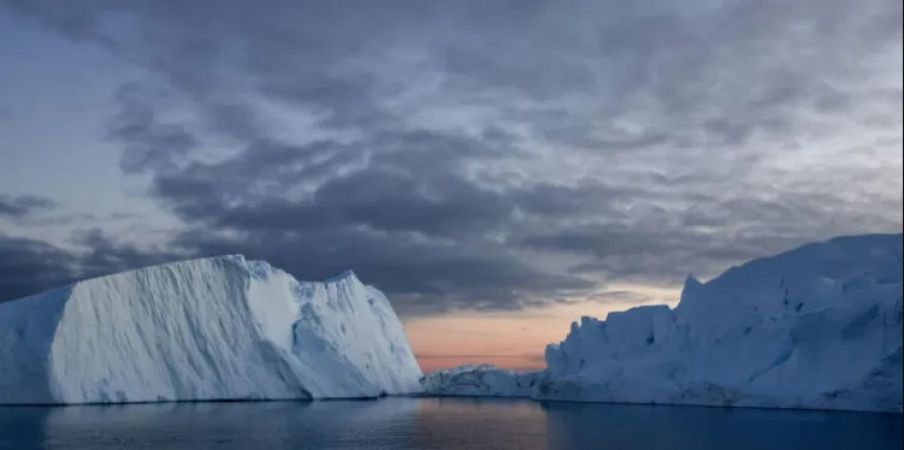
Greenland: A new study predicts that the zombie ice of the vast Greenland ice sheet will eventually raise global sea levels by at least 27 cm (10 inches).
Ice that is still clinging to thick areas of ice, but is no longer receiving nourishment from those larger glaciers, is known as zombie or wasted ice. This results in less snowfall in the original glacial replenishment.
Climate change is melting wasted ice in the interim, according to study co-author and glaciologist William Kolgan of the Geological Survey of Denmark and Greenland.
The ice is dead. According to Colgan, it would simply melt and disappear from the ice sheet. No matter which climate [emissions] scenario we choose at this point in time, this ice has been withdrawn into the ocean.
According to the study's lead author, Greenland Survey glaciologist Jason Box, it is "like a foot in the grave".
The study's inevitable sea level rise of 27 cm is more than double what experts had previously predicted would result from the melting of the Greenland ice sheet.
According to a study published in the journal Nature Climate Change, it can grow up to 78 cm high. In contrast, the Intergovernmental Panel on Climate Change report last year predicted that by the year 2100, sea level rise would likely be between 6 and 13 cm due to the melting of Greenland ice.
David Bahr, a glaciologist at the Institute for Arctic and Alpine Research at the University of Colorado Boulder and a study co-author, said, "It's a very bad situation. We're discussing the disappearance of significant parts of cities like New York, Miami. and Bangladesh.
For the study, the researchers examined the balance of the ice. In a state of perfect equilibrium, snowfall in the mountains of Greenland flows downstream, replenishes, and thickens the glacier edges, balancing the melting at the edges.
But over the past few decades, over-melting and under-replenishment have led to an imbalance. According to the study's authors, 3.3% of Greenland's total ice volume will melt, regardless of how much carbon pollution is reduced globally, because of the proportion of what is being lost, Colgan said.
Colgan commented, "I think starving would be a good phrase for what's up with the ice.
According to one of the study's authors, more than 120 trillion tons (110 trillion metric tons) of ice has melted as a result of the inability to regrow the edges of the warm ice sheet. If all that ice melted together in the United States, the resulting water would be 11 meters deep.
Greenland, one of the two vast ice sheets on Earth, is slowly losing ice due to climate change caused by the burning of coal, oil and natural gas. This is the first time scientists have calculated minimum ice loss and sea level rise for Greenland.
The method used on mountain glaciers was used by scientists to determine the minimum committed ice loss for the entire largely frozen island.
The findings, according to Gerhard Kriner, an IPCC author who specializes in ice sheet climate modeling and was not involved in the study, broadly agree with the overall amount of sea level rise seen in more complex models. However, he questioned the claim that it would occur substantially in this century.
According to Kriner, a senior scientist at the French research organization CNRS, "the work actually provides an estimate of the committed long-term (multi-century or even multi-millennium) response of the Greenland Ice Sheet, not the minimum damage." Estimation in this century."
Since the start of the industrial age, the world has warmed by an average of about 1.2 °C, causing a range of effects from heatwaves to high-intensity storms.
The countries have agreed to keep global warming to 2 degrees as part of the Paris climate agreement.
Even if global warming ranges from 2 to 2.5 degrees, the IPCC warned in its report on climate impacts this year, "the coastlines will continue to reshape over the millennia, affecting at least 25 megacities and sinking low-lying areas," which are home to were up to 1.3 billion people in 2010.
Autumn crops in China are in jeopardy due to an extraordinary heatwave and drought
China energy Crisis: Sichuan looks to coal as hydro dams run dry
Cloudburst causes floods, Kullu schools shut due to heavy rain